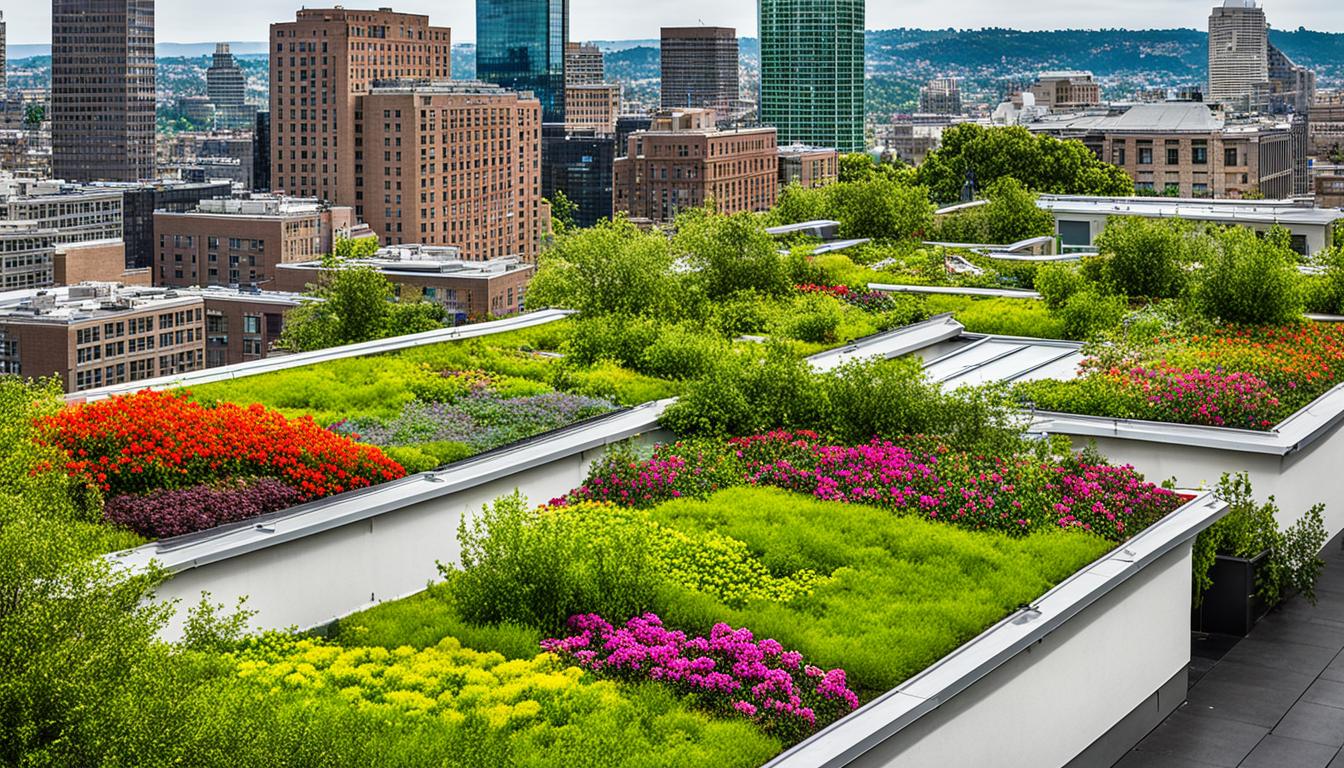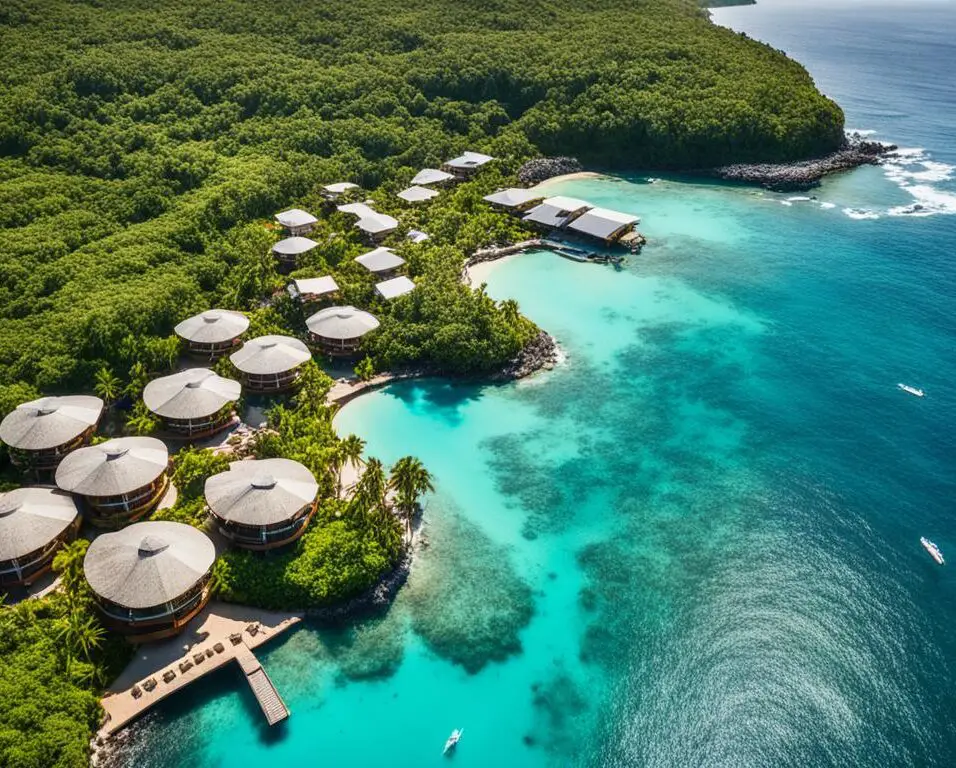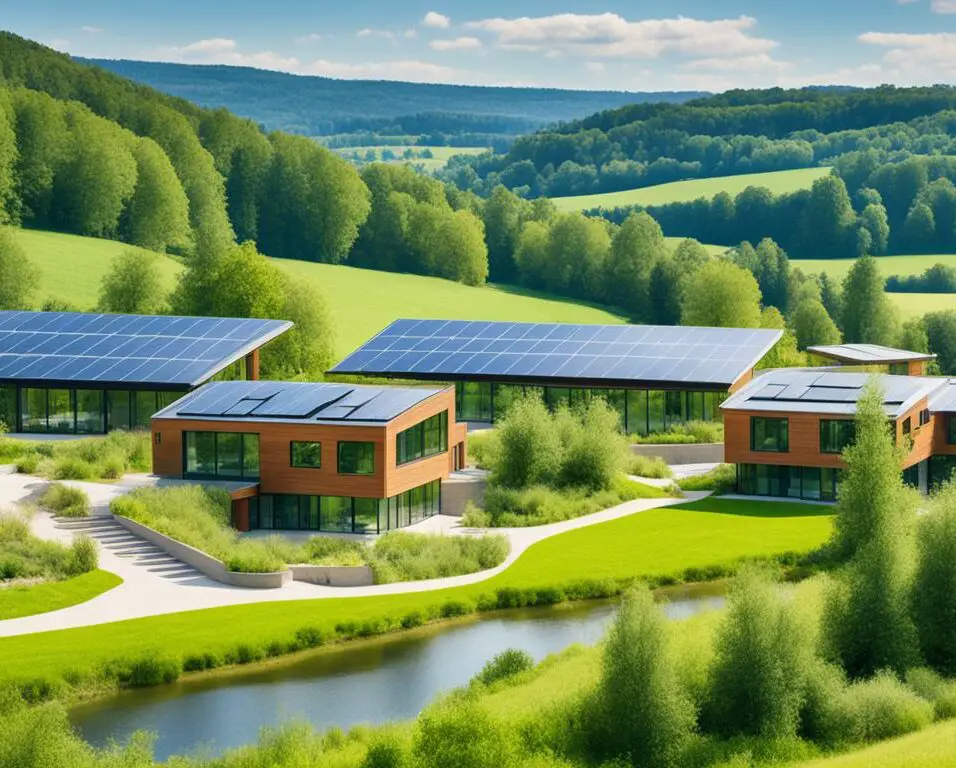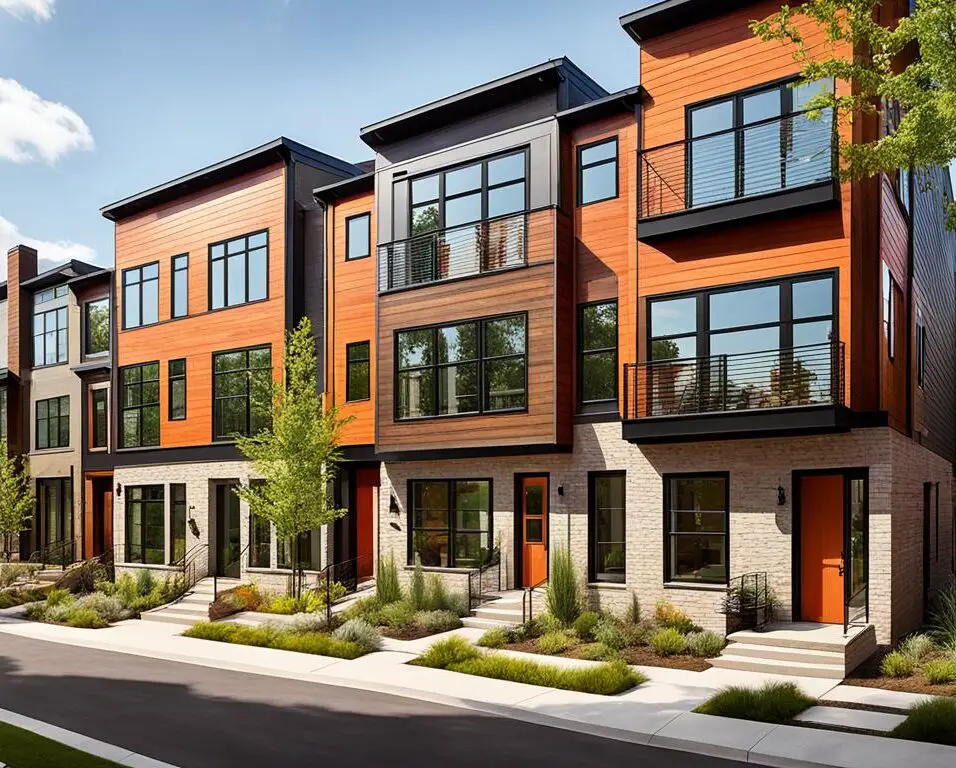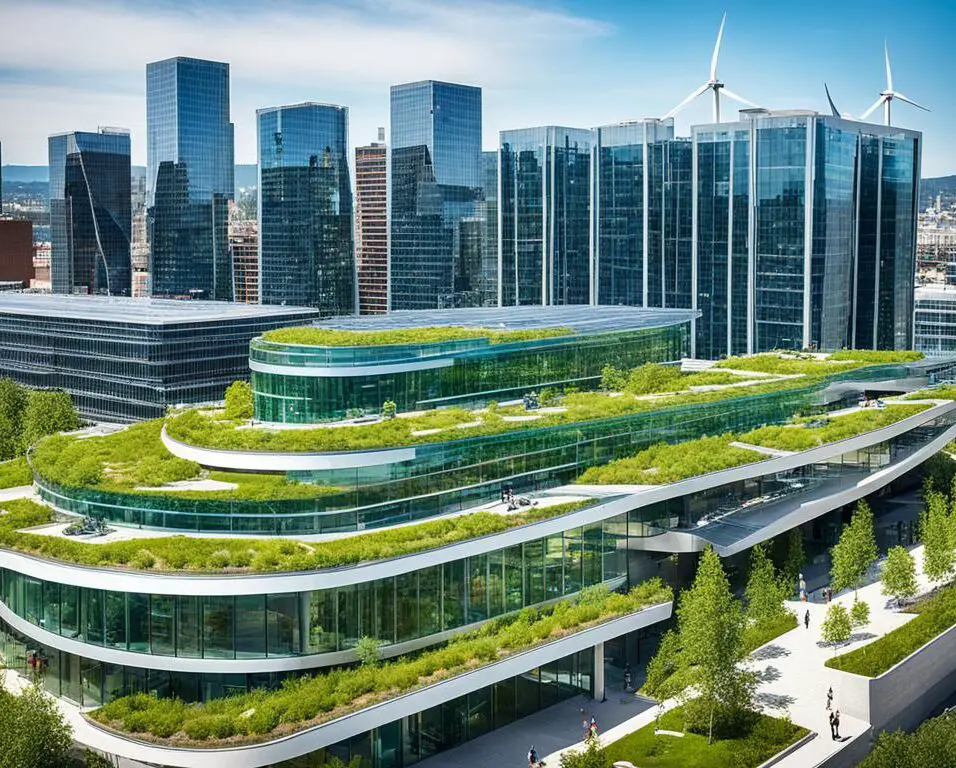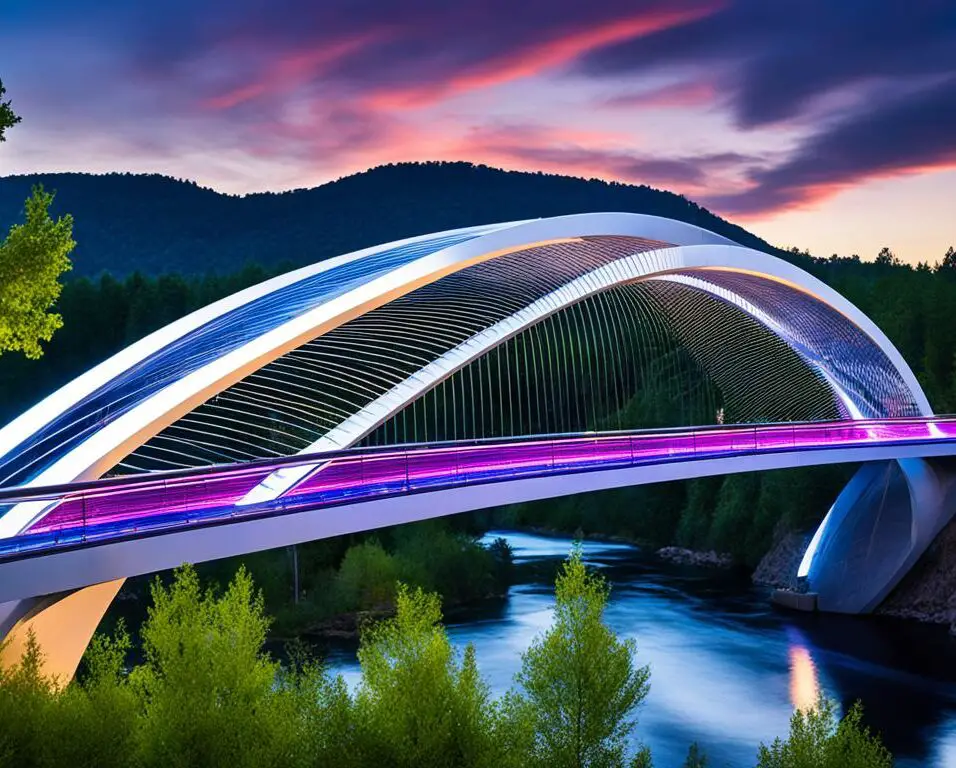Discover the Incredible Benefits of Green Roofs
As urban living continues to expand, the need for sustainable and environmentally friendly solutions becomes increasingly important. One such solution is the implementation of green roofs, which offer a multitude of benefits that enhance both our cities and our quality of life. From improved energy efficiency to enhanced air quality and increased biodiversity, green roofs have the power to transform our urban landscapes.
Key Takeaways:
- Green roofs improve energy efficiency and reduce energy consumption.
- They purify the air, mitigating the negative effects of air pollution.
- Green roofs create valuable habitats for urban wildlife, promoting biodiversity.
- By incorporating green roofs into building design, we can foster sustainable urban development.
- Green roofs contribute to a more livable and resilient environment for current and future generations.
Enhanced Energy Efficiency
Green roofs play a crucial role in enhancing energy efficiency and promoting sustainable living. By providing insulation for buildings, green roofs help reduce energy consumption and lower utility bills. The vegetation and soil layers act as natural thermal barriers, reducing the need for heating in the winter and cooling in the summer.
“Green roofs can significantly reduce energy consumption by up to 30% in the summer and 10% in the winter,” says a study conducted by the Department of Architecture and Civil Engineering at Chalmers University of Technology.
This reduction in energy consumption translates to important cost savings and contributes to a greener future. Residential and commercial buildings alike can benefit from the energy-saving properties of green roofs.
Do you want to see the numbers? Take a look at the table below to understand the potential impact of green roofs on energy consumption in different seasons:
| Season | Energy Consumption Reduction |
|---|---|
| Summer | Up to 30% |
| Winter | Up to 10% |
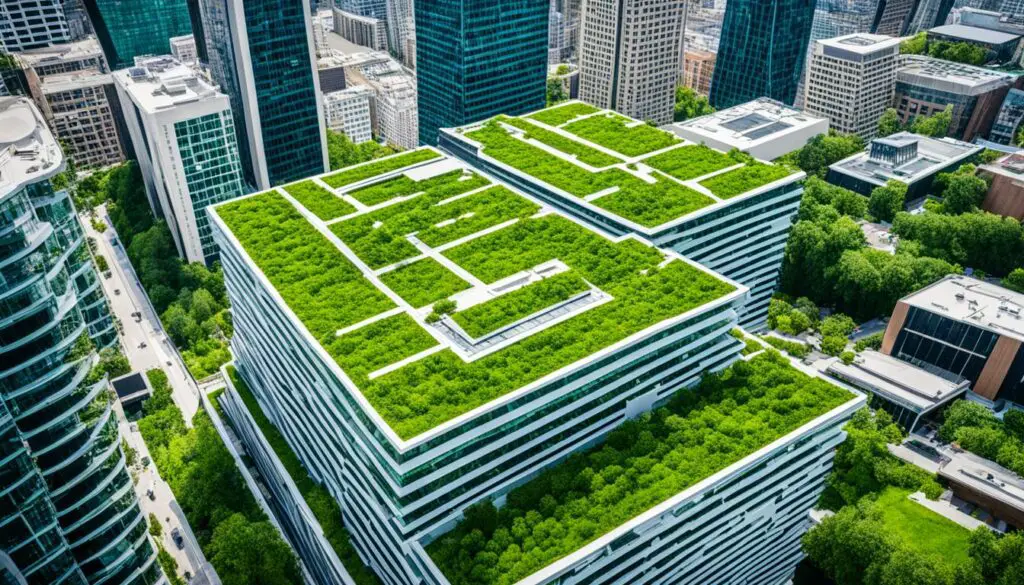
The image above showcases the insulating properties of green roofs, highlighting how they act as a natural barrier that helps regulate interior temperatures and reduce energy needs.
In addition to the energy savings, green roofs also provide a host of other benefits, such as improved air quality and increased biodiversity. The combination of these advantages makes green roofs an excellent investment for a sustainable and energy-efficient future.
Improved Air Quality
Green roofs play a crucial role in improving air quality and acting as natural air purifiers. The plants on green roofs absorb carbon dioxide and release oxygen through photosynthesis, making them effective at reducing greenhouse gas emissions and combating climate change.
But their air purifying abilities don’t stop there. The vegetation and soil layers of green roofs also act as filters, removing pollutants from the air and reducing air pollution in urban areas. These natural filters significantly contribute to the reduction of air particulate matter and nitrogen dioxide levels, which are major pollutants associated with respiratory issues and other health problems.
According to studies, green roofs can reduce air particulate matter by up to 85% and nitrogen dioxide levels by up to 40%, making them a powerful tool for mitigating the negative impacts of air pollution and improving overall air quality in urban environments.
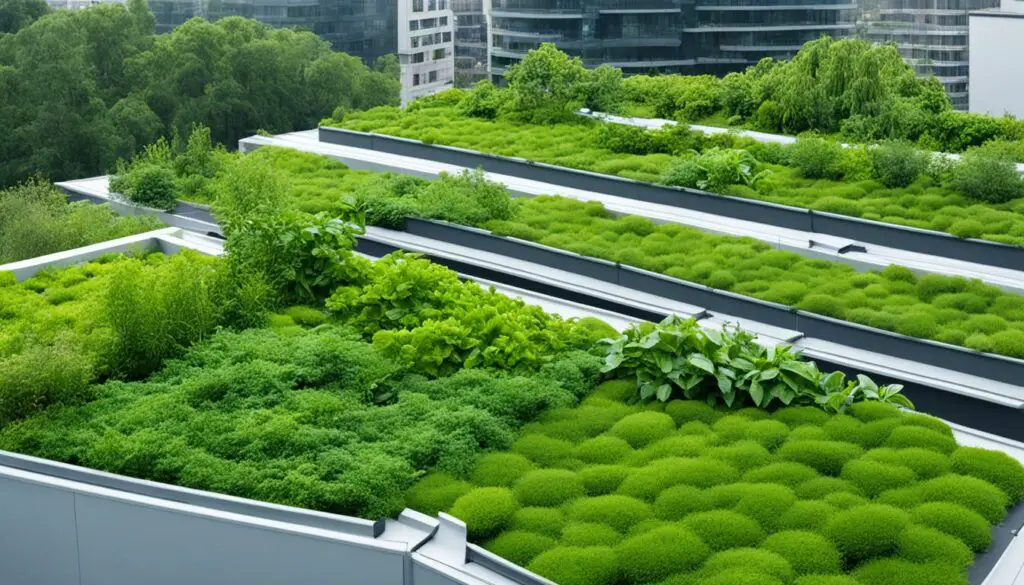
Effectiveness of Green Roofs in Pollution Reduction
| Air Particulate Matter Reduction | Nitrogen Dioxide Reduction | |
|---|---|---|
| Green Roofs | Up to 85% | Up to 40% |
| Other Urban Solutions | Varies | Varies |
I believe green roofs are a game-changer when it comes to mitigating air pollution in urban areas. They not only help combat climate change but also contribute to cleaner and healthier environments for city dwellers. The ability of green roofs to filter pollutants from the air is remarkable, making them an essential tool in urban planning and sustainable development.
- Green roofs act as natural air purifiers, reducing greenhouse gas emissions and combating climate change.
- The vegetation and soil layers on green roofs filter pollutants, resulting in improved air quality in urban areas.
- Studies have shown that green roofs can reduce air particulate matter by up to 85% and nitrogen dioxide levels by up to 40%.
In conclusion, green roofs are not only aesthetically pleasing and environmentally friendly, but they also have tangible benefits in terms of air purification and pollution reduction. Integrating green roofs into urban development plans can have a profound and lasting positive impact on air quality and the well-being of communities.
Increased Biodiversity
Green roofs provide a valuable habitat for urban wildlife, contributing to increased biodiversity in areas where natural green spaces are limited. These green spaces on rooftops offer a sanctuary for various plant and animal species, creating an urban wildlife habitat that supports and preserves local ecosystems.
One of the key benefits of green roofs is their ability to attract pollinators such as bees and butterflies. The diverse plant life found on green roofs provides a rich source of nectar and pollen, supporting the essential role these insects play in pollination. By creating a thriving environment for pollinators, green roofs contribute to the overall health of local ecosystems and promote the reproduction of plants in urban areas.
In addition to pollinators, green roofs also attract a variety of birds and insects. These rooftops become microcosms of biodiversity within the urban environment, offering food and shelter for a range of species. Birds find refuge in the vegetation and use green roofs as nesting sites, while insects such as beetles and ants thrive in the diverse plant life and provide food for other species.
Furthermore, green roofs can play a crucial role in connecting fragmented habitats and facilitating the dispersal of plant seeds. They act as “stepping stones” for wildlife movement, enabling species to move across urban areas where green spaces are scarce. This connectivity supports the genetic diversity and resilience of plant populations, contributing to the overall biodiversity in the urban landscape.
By providing a habitat for urban wildlife and promoting plant and animal diversity, green roofs make significant contributions to creating a greener and more sustainable urban environment. The presence of green roofs not only enhances the visual appeal of buildings but also fosters the coexistence of humans and wildlife, creating a harmonious balance between urban development and nature.
Conclusion
In summary, green roofs provide a wide range of benefits that greatly contribute to sustainable urban living. With their enhanced energy efficiency, green roofs help reduce energy consumption and lower utility bills, making them a valuable investment for both residential and commercial buildings. These nature-based solutions also play a crucial role in improving air quality by acting as natural air purifiers, reducing greenhouse gas emissions, and mitigating the negative impacts of air pollution. Additionally, green roofs create valuable habitats for urban wildlife, promoting biodiversity and connecting fragmented ecosystems.
By incorporating green roofs into building design and urban planning, cities can transform into more sustainable, livable, and resilient spaces for current and future generations. The multitude of advantages, including the promotion of energy efficiency, enhancement of air quality, and increase in biodiversity, make green roofs an integral part of the sustainable development of urban areas. Embracing the benefits of green roofs not only creates healthier and more environmentally friendly cities but also contributes to a brighter future for our planet.
To achieve sustainable urban living, it is crucial to prioritize the integration of green roofs in our cities. By harnessing the summarized green roof benefits of energy efficiency, improved air quality, and increased biodiversity, we can pave the way for a greener, healthier, and more resilient urban future. Let us embrace the power of green roofs and work together towards sustainable and environmentally friendly urban development.



